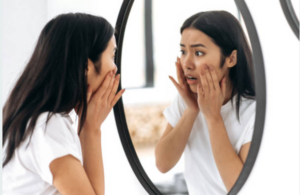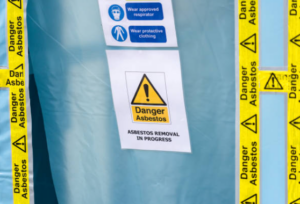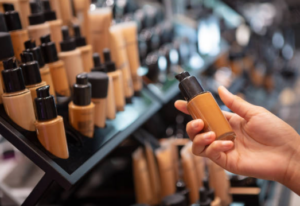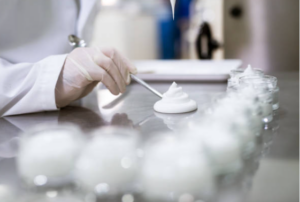Uncovering the Truth About Harmful Cosmetics

Makeup has been a form of self-expression and enhancement for centuries, offering individuals the ability to transform and accentuate their features. However, the pursuit of beauty should not come at the cost of one’s health. The beauty industry has faced scrutiny over the years, with concerns ranging from animal testing to the use of harmful ingredients. In this exposé, we delve into the Claire’s makeup scandal, a shocking revelation that exposed the presence of harmful substances in cosmetics targeted at a young audience. This scandal not only raises questions about product safety but also highlights the need for greater transparency and accountability in the beauty industry.
Claire’s, a popular retailer known for its accessories and cosmetics targeted primarily at a teenage audience, found itself at the center of a controversy that shook the beauty industry. Reports surfaced regarding the discovery of asbestos, a known carcinogen, in some of Claire’s makeup products. Asbestos is a naturally occurring mineral that, when inhaled, can cause serious health issues, including lung cancer and mesothelioma.
The shocking revelation prompted widespread concern and calls for immediate action. Parents, consumers, and advocacy groups raised questions about the safety standards and regulatory oversight in the beauty industry, particularly for products aimed at young individuals who may be more susceptible to long-term health effects.
The Presence of Asbestos in Makeup
The revelation of asbestos in makeup products, particularly those marketed towards a young demographic, sent shockwaves through the beauty industry. Asbestos, a naturally occurring mineral known for its heat resistance and insulating properties, has a dark history of causing severe health issues, particularly in occupational settings. However, its discovery in cosmetics raised new questions and concerns about how such a hazardous substance found its way into products intended for personal care.
- Source of Contamination:
- Manufacturing Practices: Questions arose about the manufacturing processes employed by cosmetic companies. Was the contamination a result of inadequate quality control, allowing asbestos-laden raw materials to be incorporated into the final products?
- Supply Chain Oversight: The incident highlighted potential gaps in supply chain oversight. Cosmetic brands, especially those with a global presence, source ingredients from various suppliers. The presence of asbestos emphasized the need for stringent monitoring at every stage of the supply chain.
- Contaminated Raw Materials: Asbestos contamination could have originated from the use of talc or other mineral-based ingredients in cosmetics. Talc, a common component in powders and blushes, is often found near asbestos deposits in the earth, posing a risk of cross-contamination during mining and processing.
- Regulatory Oversight:
- Cosmetic Safety Regulations: The incident prompted a reevaluation of existing cosmetic safety regulations. Were the regulatory frameworks in place sufficient to detect and prevent the presence of hazardous substances like asbestos? Advocates argued that cosmetic safety standards needed to be updated to include more stringent testing for potential contaminants.
- Testing Protocols: The discovery also brought attention to the testing protocols employed by cosmetic companies. Were these protocols robust enough to identify the presence of asbestos at trace levels? The need for standardized testing methods and comprehensive screening became a focal point of discussions.
- Global Harmonization: The scandal underscored the importance of global harmonization of cosmetic regulations. With many brands operating on an international scale, a unified set of safety standards would ensure consistency in product safety across borders.
- Consumer Impact and Awareness:
- Risk to Young Consumers: The revelation that asbestos was present in makeup products targeted at a younger audience amplified concerns about the heightened vulnerability of adolescents and teenagers. The long-term health implications for young users became a central point of discussion.
- Informed Consumer Choices: The incident emphasized the importance of informed consumer choices. Were consumers, particularly parents purchasing products for their children, provided with adequate information about potential risks? The need for clear labeling and accessible information became a rallying point for consumer advocacy groups.
- Ripple Effect on Confidence: The discovery of asbestos in makeup products had a profound impact on consumer confidence. The incident prompted many individuals to reevaluate their trust in cosmetic brands and highlighted the fragility of the relationship between consumers and the beauty industry.
- Corporate Accountability:
- Communication Strategies: How cosmetic brands communicated the issue became a crucial aspect of the scandal. Transparent and timely communication regarding the presence of asbestos, steps taken to address the situation, and future prevention measures played a significant role in shaping public perception.
- Recall Procedures: The incident shed light on the effectiveness of recall procedures. How quickly and efficiently did cosmetic brands act to remove contaminated products from shelves? The speed and transparency of recall actions became a measure of corporate responsibility.
- Investigative Measures: Cosmetic brands faced scrutiny regarding the thoroughness of their internal investigations. Did these investigations uncover the root causes of contamination, and were corrective measures implemented to prevent future occurrences?
- Media Coverage and Public Outcry:
- Amplification of Concerns: Media coverage played a crucial role in amplifying concerns and bringing the issue to a wider audience. The scandal became a focal point of news reports, investigative journalism, and social media discussions, further intensifying the call for accountability.
- Impact on Brand Reputation: The public outcry had a direct impact on brand reputation. Cosmetic companies implicated in the scandal faced challenges in rebuilding trust and restoring their standing in the eyes of consumers.
- Industry Reflection: The Claire’s makeup scandal prompted the entire beauty industry to reflect on its practices. Competing brands took note of the public response and evaluated their own safety protocols to ensure they were not susceptible to similar controversies.

Health Concerns and Emotional Toll
The Claire’s makeup scandal had far-reaching implications for consumers, especially parents who had unwittingly purchased these products for their children. The dual impact of health concerns and emotional distress highlighted the need for greater transparency and accountability within the beauty industry.
- Health Implications:
- Parents faced the anxiety of potential health risks for their children, who may have been using Claire’s makeup products containing asbestos.
- The discovery raised broader concerns about the long-term health effects of regular exposure to harmful substances in cosmetics.
- Emotional Toll:
- The emotional toll on parents was significant, as they grappled with feelings of betrayal and a sense of trust violated by a brand that caters to a young demographic.
- The incident sparked conversations about the ethical responsibility of cosmetic brands to prioritize consumer safety over profits.
Industry Response and Regulatory Gaps
In the wake of the Claire’s makeup scandal, the beauty industry faced intensified scrutiny, and questions arose about the adequacy of regulatory frameworks. The response from both the cosmetic brand and regulatory bodies shed light on the challenges and gaps in ensuring the safety of beauty products.
- Claire’s Response:
- Claire’s initially pulled the affected products from shelves and conducted an internal investigation into the source of contamination.
- The brand issued statements emphasizing its commitment to consumer safety and outlined steps taken to address the issue.
- Regulatory Gaps:
- The incident exposed potential gaps in regulatory oversight, prompting calls for a reevaluation of cosmetic safety standards.
- Questions arose about the effectiveness of current regulations in preventing the presence of harmful substances in cosmetics and ensuring timely recalls when contamination is detected.
- Advocacy for Stricter Regulations:
- Consumer advocacy groups seized the opportunity to call for stricter regulations and increased transparency in the beauty industry.
- The scandal underscored the importance of regularly reviewing and updating cosmetic safety standards to keep pace with evolving knowledge about potential hazards.
The Claire’s makeup scandal served as a wake-up call for the beauty industry, highlighting the imperative for transparency and accountability. As consumers become more conscious of the products they use, the onus is on cosmetic brands and regulatory bodies to ensure that safety remains paramount.

Ingredient Transparency:
Consumers demand greater transparency regarding the ingredients used in cosmetic formulations.
Cosmetic brands are urged to provide clear and accessible information about their products, enabling consumers to make informed choices.
Third-Party Testing and Certification:
The incident prompted discussions about the role of third-party testing and certification in verifying the safety of cosmetic products.
Advocates argue that independent assessments can enhance consumer trust and serve as an additional layer of assurance.
Educating Consumers:
Empowering consumers with knowledge about potential risks associated with certain ingredients is crucial.
Educational campaigns can help consumers make informed decisions and advocate for their right to safe and transparent beauty products.
The Claire’s makeup scandal leaves an indelible mark on the beauty industry, prompting reflection, reform, and a reevaluation of priorities. As stakeholders navigate the aftermath of the controversy, there are key lessons to be learned and actionable steps to shape a safer and more accountable beauty landscape.

Lesson 1: Vigilance in Supply Chain Management
The incident underscores the importance of rigorous supply chain management to prevent the inadvertent introduction of harmful substances into cosmetic products.
Lesson 2: Collaborative Industry Efforts
Collaboration among cosmetic brands, regulatory bodies, and consumer advocacy groups is essential to address systemic issues and collectively enhance safety standards.
Lesson 3: Prioritizing Consumer Well-being
Brands must prioritize consumer well-being over profit margins, fostering a culture where safety is non-negotiable, and transparency is a core value.
Future Directions: A Safer Beauty Landscape
The beauty industry has an opportunity to redefine its commitment to consumer safety, embracing a future where harmful substances have no place in cosmetic formulations.
The Claire’s makeup scandal serves as a stark reminder that the pursuit of beauty should not compromise health. As the beauty industry grapples with the fallout from this controversy, it is incumbent upon cosmetic brands, regulatory bodies, and consumers to collectively champion a safer, more transparent beauty landscape. This exposé illuminates the need for continued vigilance, collaboration, and a steadfast commitment to prioritizing the well-being of consumers above all else.

